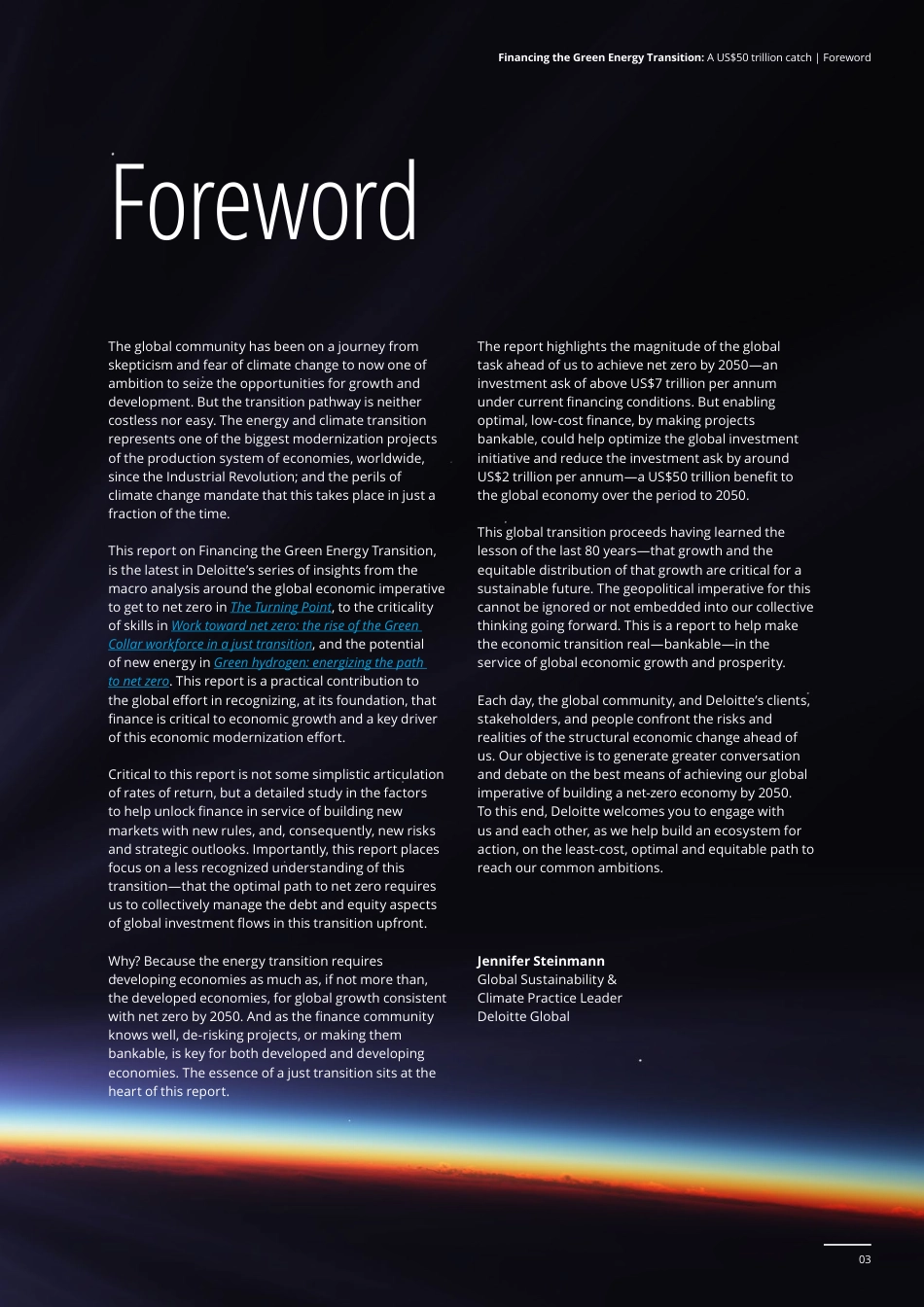Financing the Green Energy TransitionA US$50 trillion catchNovember 2023The global community has been on a journey from skepticism and fear of climate change to now one of ambition to seize the opportunities for growth and development. But the transition pathway is neither costless nor easy. The energy and climate transition represents one of the biggest modernization projects of the production system of economies, worldwide, since the Industrial Revolution; and the perils of climate change mandate that this takes place in just a fraction of the time. This report on Financing the Green Energy Transition, is the latest in Deloitte’s series of insights from the macro analysis around the global economic imperative to get to net zero in The Turning Point, to the criticality of skills in Work toward net zero: the rise of the Green Collar workforce in a just transition, and the potential of new energy in Green hydrogen: energizing the path to net zero. This report is a practical contribution to the global effort in recognizing, at its foundation, that finance is critical to economic growth and a key driver of this economic modernization effort. Critical to this report is not some simplistic articulation of rates of return, but a detailed study in the factors to help unlock finance in service of building new markets with new rules, and, consequently, new risks and strategic outlooks. Importantly, this report places focus on a less recognized understanding of this transition—that the optimal path to net zero requires us to collectively manage the debt and equity aspects of global investment flows in this transition upfront. Why? Because the energy transition requires developing economies as much as,...



